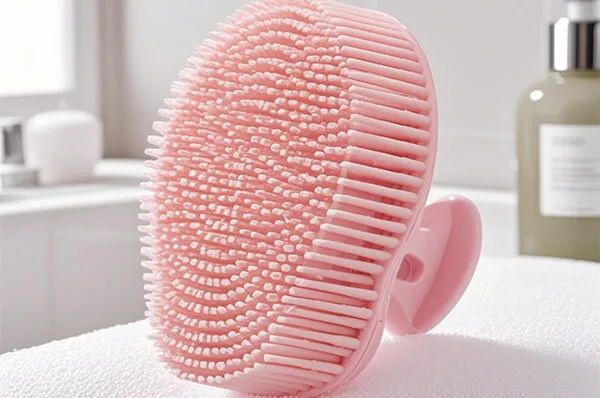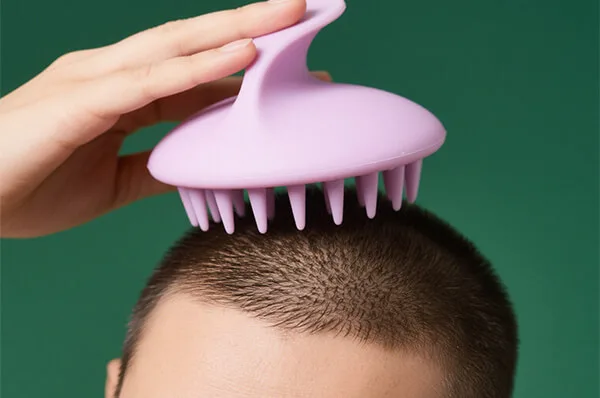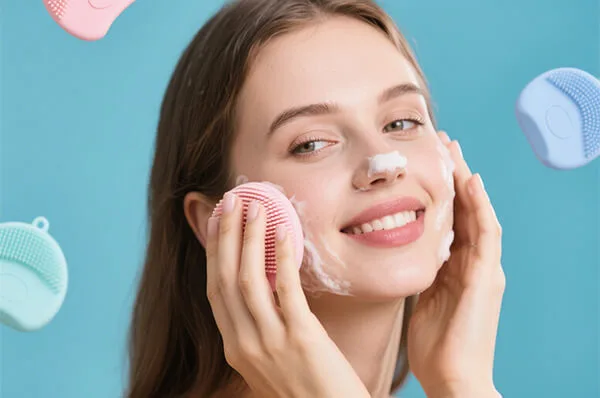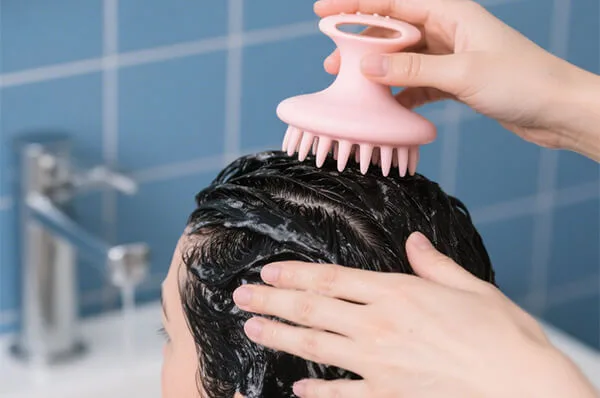- Have any questions?
- +86 19574832024
- admin@beaut-lohas.com
Silicone Body Scrubbers
In the past couple of years, due to the focus on personal hygiene and skin health, silicone body scrubbers have become the most sought after items among consumers owing to their soft textures, durability, and ease of cleaning. The application of antibacterial coating technology is a great innovation that additionally optimizes the functionality and hygiene level of the scrubbers.
The Value of Antibacterial Properties within Body Scrubbers
Our body is in continuous contact with various microorganisms as the environment of the bathroom where the body scrubbers usually find usage is warm and moist, providing the perfect spots for bacteria, fungi, and other pathogens to breed. It usually comes into direct contact with the skin because of the usage of the body scrubber. If it carries harmful bacteria, then those microorganisms can come back into the skin, which can cause skin infections, acne breakouts, or other skin problems. For instance, there is bacterium usually found on skin called staphylococcus aureus; it will multiply rapidly on a dirty or unhygienic scrubber and will lead to folliculitis when enters the hair follicles. Thus, giving antibacterial properties to silicone body scrubbers is imperative to create good skin health and a clean bathing experience.
Types of Antibacterial Coating Technologies
1. Antibacterial Coatings of Silver Ions
Silver ions have long been known for their excellent antibacterial properties. In the case of silicone body scrubbers, a very thin layer of silver ion-infusion coating can be applied onto the surface of the silicone. When bacteria explode the membrane of their bacteria cell and also disconcerts the essential cellular processes including respiration and reproduction. For instance, some of the advanced types of silver ion coatings are meant to release a controlled amount of silver ions continuously over time to make sure an endless antibacterial action can be done according to the degree of uses and washes of the scrubber. This type of coating tends to be pretty stable and has been proved effective against a broad spectrum of common bacteria and fungi.
2. Coatings of Nano-TiO₂
Nano-TiO₂ is another widely used material for antibacterial coatings. Under ultraviolet radiation, TiO₂ can generate strong oxidizing reactive oxygen species such as hydroxyl radicals and superoxide anions, which can destroy the membrane and walls of bacteria, thus killing them. However, in the bathroom environment, due to the lackness of sunlight, ultraviolet light may not always be sufficient to keep continuous activation. Therefore, some manufacturers have developed improved photocatalytic activity of TiO₂ under lower light conditions, while some have combined photocatalytic activity with other sources of energy to keep it working. Furthermore, it would be of little hazard to the environment, since TiO₂ is an eco-friendly material, thus it comes as another desirable coat for silicone body scrubbers.
3. Organic Antibacterial Agents
Some organic compounds that demonstrate antibacterial activity can also be used for the coating of silicone scrubbers. These include quaternary ammonium salts that have a positive charge and can deactivate bacteria by ionically interacting with the negatively charged cell wall of bacteria. Organic antimicrobial agents have the advantage of being engineered with specific antibacterial spectra and good adhesion to silicone substrates. However, their life expectancy is reasonably limited in comparison to inorganic materials such as silver ions or TiO₂, which may need occasional replenishing or recoating.
Advantages of Antibacterial Coating for Silicone Body Scrubbers
1. Improved Hygiene
The most direct benefit would be inhibiting the growth of bacteria on the scrubber. This gives confidence to users not to be concerned about bacterial contamination of the scrubber when applying it on the skin for exfoliation. With regular scrubbing of the scrubber and an antibacterial coating, the scrubber may remain hygienic for longer.
2. Longer Life
The antibacterial action could prevent the bacterial growth and the consequential degradation of silicone material with metabolic by-products. For example, mold could discolor silicone or cause degradation, while antibacterial protection could ensure performance quality for a longer period, thus reducing the frequency of replacement of the silicone scrubber.
3. Better User Experience
There is increasing concern among consumers regarding hygiene matters, which gives the antibacterial-coated silicone scrubber an assurance in their mind. It provides another layer of assurance regarding the safety of their daily bathing routine and proves to consumers that they are taking further care of their skin. This perception ends up complementing their experience, resulting in greater brand loyalty toward the products utilizing this technology.
Challenges and Future Directions
1. Coating Durability
With successful long-life durability of antibacterial coatings posing one of the major challenges, the frequent use and contact with water and bath products would invariably limit their life in the field. Manufacturers should thus be incentivized to conduct R&D into adhesive and wear-resistance studies for coatings so that maintenance of antibacterial efficacy over a duration might be feasible.
2. Cost Consideration
The application of any antibacterial coating technologies generally results in an increase in the production cost of silicone body scrubbers. A balance between effective antibacterial characteristics and price affordability for consumers constitutes a major issue during development. It is assumed that prices will gradually drop as this technology matures and as volumes increase.
3. Regulatory and Safety Aspects
Since antibacterial coating products come into contact with human bodies, they have to comply with stringent regulations to assure their safety. Safety studies are conducted, and relevant certification must prove that the coating does not leach harmful substances or produce unwanted health effects.
On the line is the antibacterial coating technology being applied in silicone body scrubbers, which represents a good and promising development regarding an important concern in the hygiene of personal care products. There are challenges yet to face; however, innovations and improvement will bring antibacterial silicone body scrubbers that are more efficient and accessible for the benefit of skin health and bathing experience.




